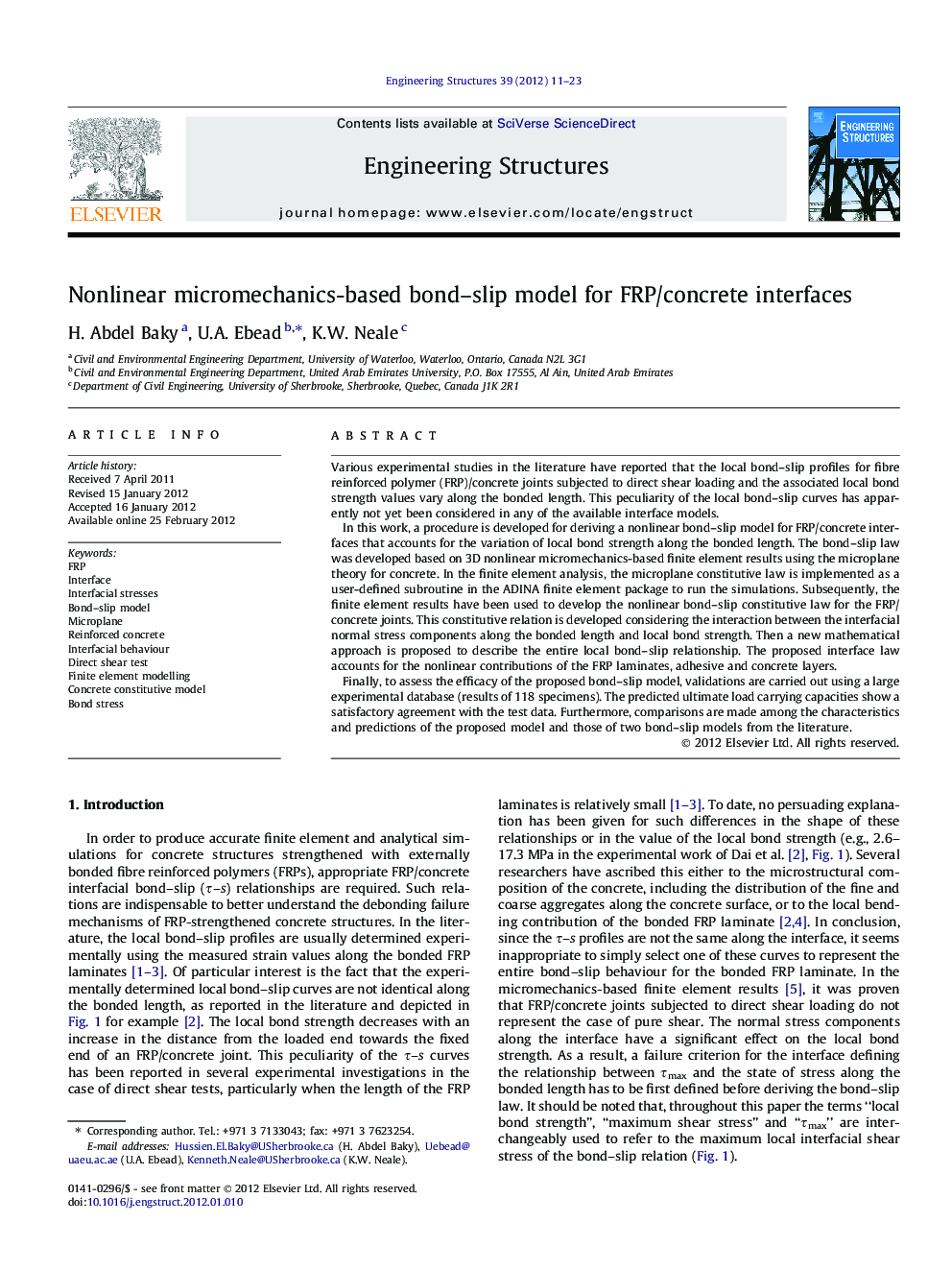| Article ID | Journal | Published Year | Pages | File Type |
|---|---|---|---|---|
| 267525 | Engineering Structures | 2012 | 13 Pages |
Various experimental studies in the literature have reported that the local bond–slip profiles for fibre reinforced polymer (FRP)/concrete joints subjected to direct shear loading and the associated local bond strength values vary along the bonded length. This peculiarity of the local bond–slip curves has apparently not yet been considered in any of the available interface models.In this work, a procedure is developed for deriving a nonlinear bond–slip model for FRP/concrete interfaces that accounts for the variation of local bond strength along the bonded length. The bond–slip law was developed based on 3D nonlinear micromechanics-based finite element results using the microplane theory for concrete. In the finite element analysis, the microplane constitutive law is implemented as a user-defined subroutine in the ADINA finite element package to run the simulations. Subsequently, the finite element results have been used to develop the nonlinear bond–slip constitutive law for the FRP/concrete joints. This constitutive relation is developed considering the interaction between the interfacial normal stress components along the bonded length and local bond strength. Then a new mathematical approach is proposed to describe the entire local bond–slip relationship. The proposed interface law accounts for the nonlinear contributions of the FRP laminates, adhesive and concrete layers.Finally, to assess the efficacy of the proposed bond–slip model, validations are carried out using a large experimental database (results of 118 specimens). The predicted ultimate load carrying capacities show a satisfactory agreement with the test data. Furthermore, comparisons are made among the characteristics and predictions of the proposed model and those of two bond–slip models from the literature.
► Normal/ shear stress distribution laws in the form were developed. ► The first model captures the shear behaviour of an orthotropic FRP laminate. ► The second model simulates the shear characteristics of an adhesive layer. ► The third model represents the shear nonlinearity of an interfacial layer. ► The models have been verified using available experimental results.
